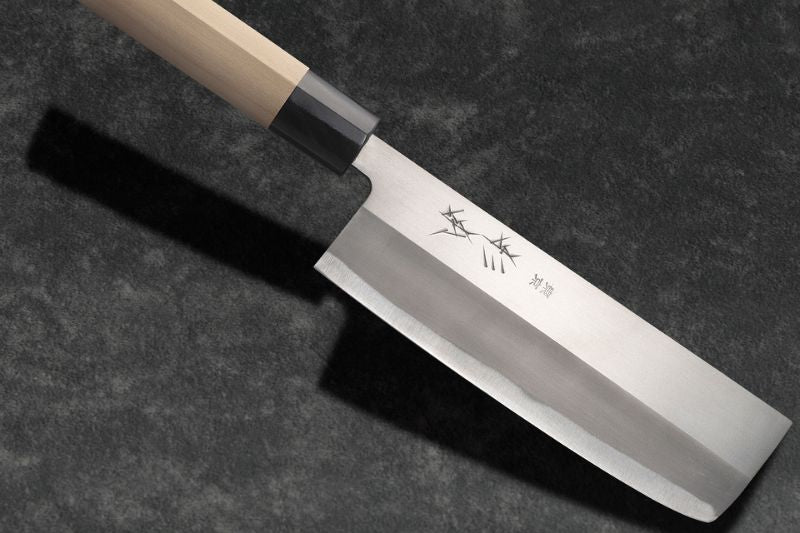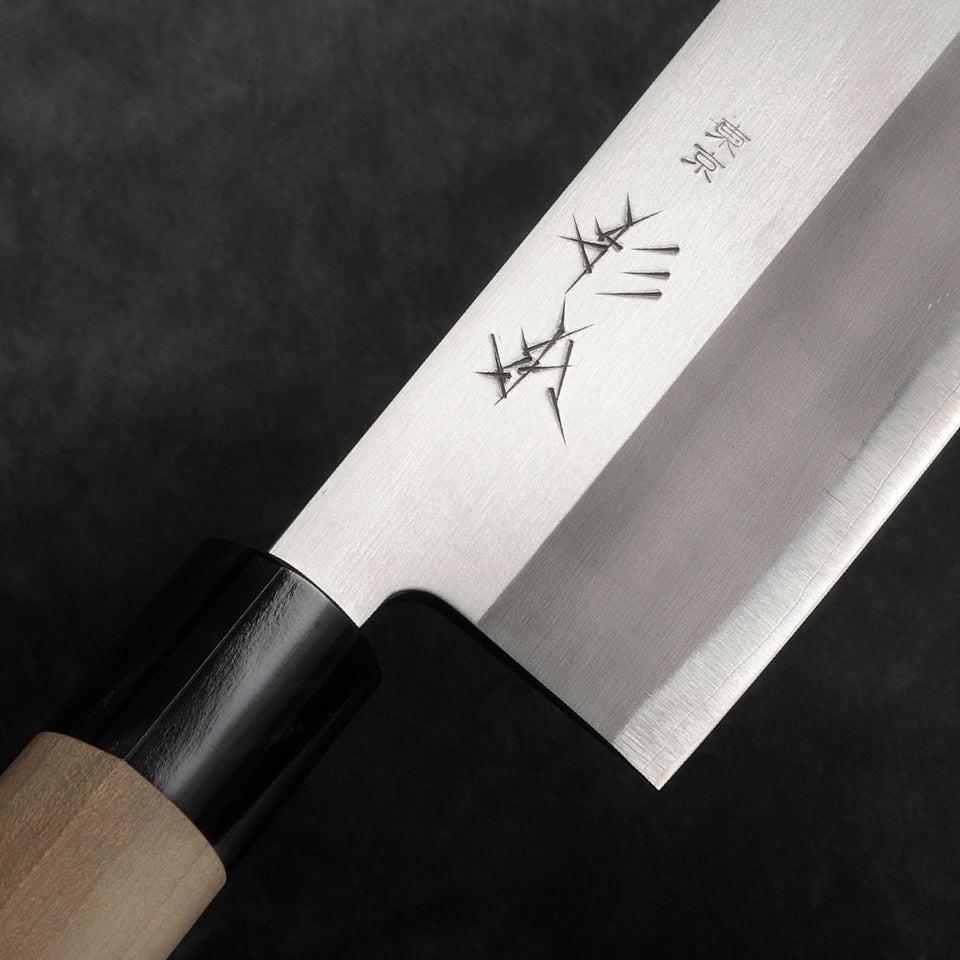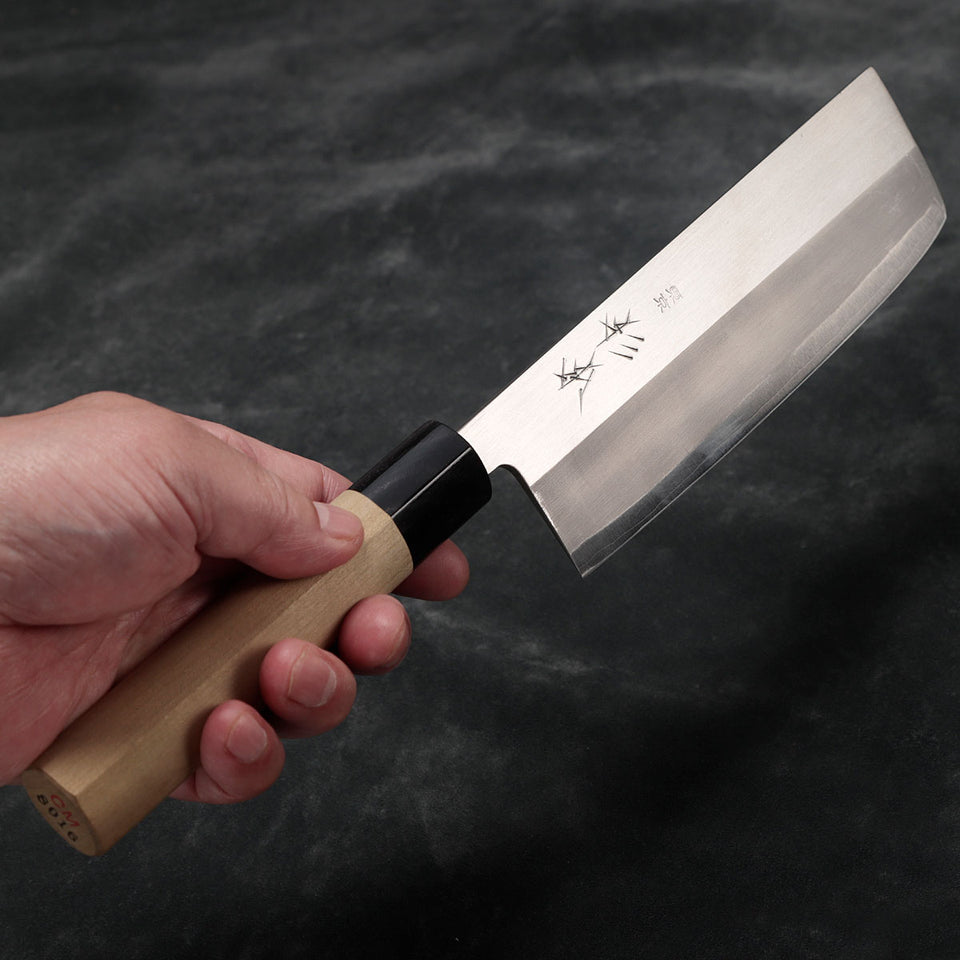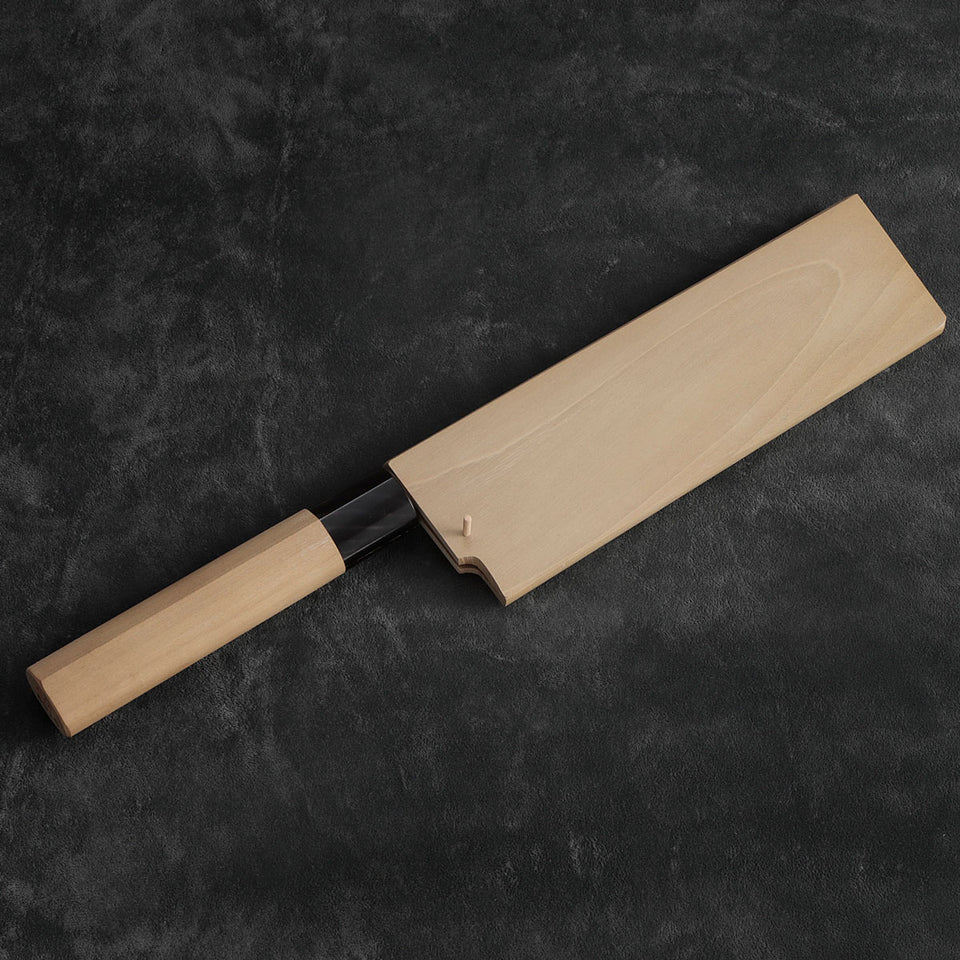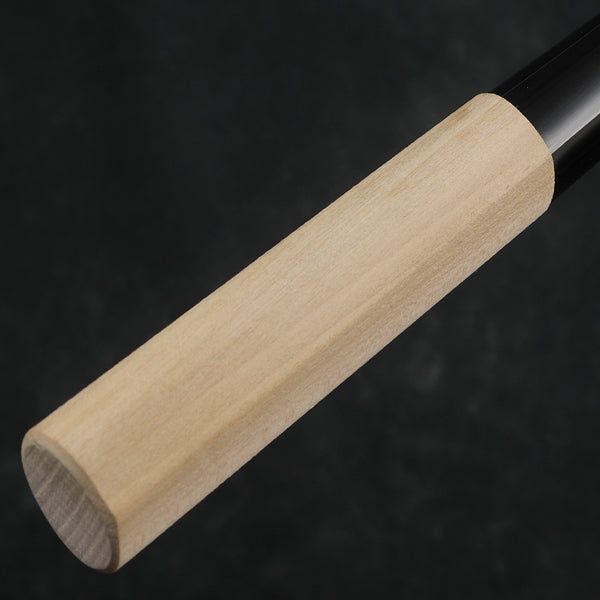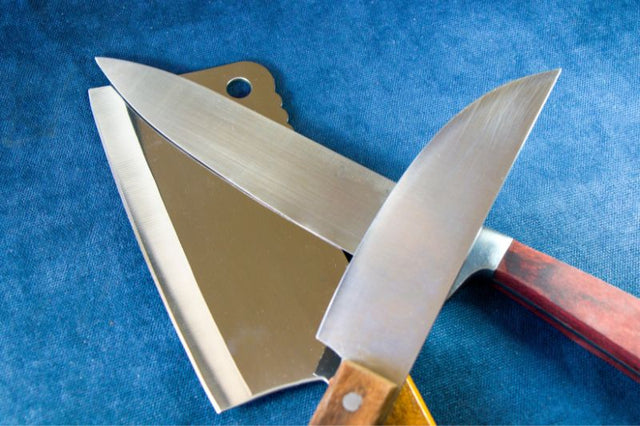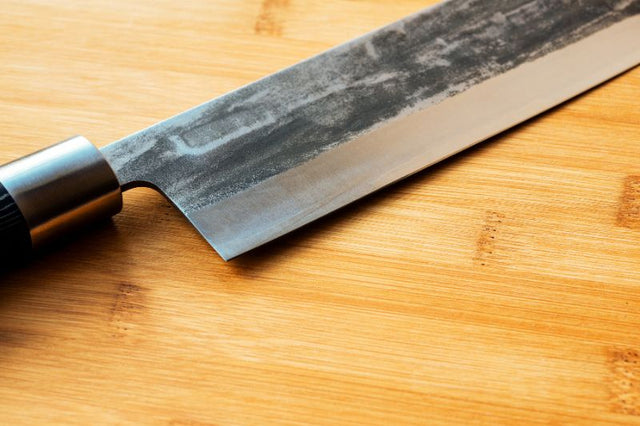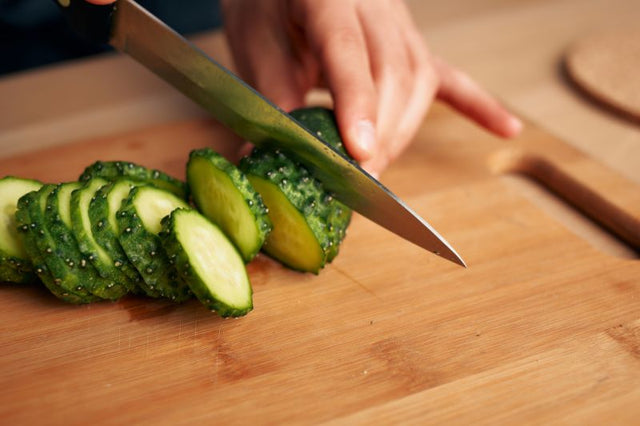A Nakiri knife is a vegetable knife used for chopping and slicing vegetables. It has a rectangular, straight-edged blade with a squared-off tip and a double-edged bevel. The blade is typically around 5-7 inches long and is made from high-quality steel, often layered to create a Damascus blade pattern.
Nakiri knives are designed to be used in an up-and-down chopping motion, making them ideal for precision cuts and finely chopping vegetables. The straight edge allows for easy slicing through vegetables without the need for a rocking motion, which can be difficult with some other types of knives. The squared-off tip of the blade also makes it easy to work with vegetables with a flat bottom, such as cucumbers or eggplants.
The Nakiri knife is perfect for preparing salads, stir-fries, or other vegetable-based dishes. It is also commonly used in Japanese cuisine for preparing ingredients for sushi or other traditional dishes.

Nakiri knives are commonly used in Japanese cuisine but have become increasingly popular worldwide among chefs and home cooks due to their excellent performance and unique design. They are often made with a traditional wooden handle, which provides a comfortable grip and a classic look.
What food can be sliced using a Nakiri knife?
The Nakiri knife is primarily designed for slicing and chopping vegetables, but it can also be used to slice other foods, such as fruits and herbs. Here are the foods that can be cut with a Nakiri knife:
- Vegetables
The Nakiri knife is designed specifically for chopping, slicing, and dicing vegetables, including leafy greens, root vegetables, and more. - Fruits
The straight blade of the Nakiri knife makes it well-suited for slicing fruits such as apples, pears, and melons, allowing for precise cuts and minimal waste. - Herbs
The sharp blade of the Nakiri knife is perfect for finely chopping herbs such as basil, parsley, and cilantro, making it an essential tool for preparing salads, dressings, and other dishes that require fresh herbs. - Boneless meats
While the Nakiri knife is not primarily designed for slicing meats, it can be used to slice boneless meats such as chicken breast or fish fillets with precision and ease.
The Nakiri knife is a highly versatile tool used to slice a wide range of foods, although it is most commonly used for cutting and chopping vegetables.
Why get a Nakiri Knife?
These are the several reasons why you might want to consider buying a Nakiri knife:
1. Precision and ease of use:
The sharp blade of a Nakiri knife makes it easy to cut vegetables with accuracy and efficiency. Its design is specifically tailored to the needs of vegetable preparation, making it an essential tool in any kitchen.
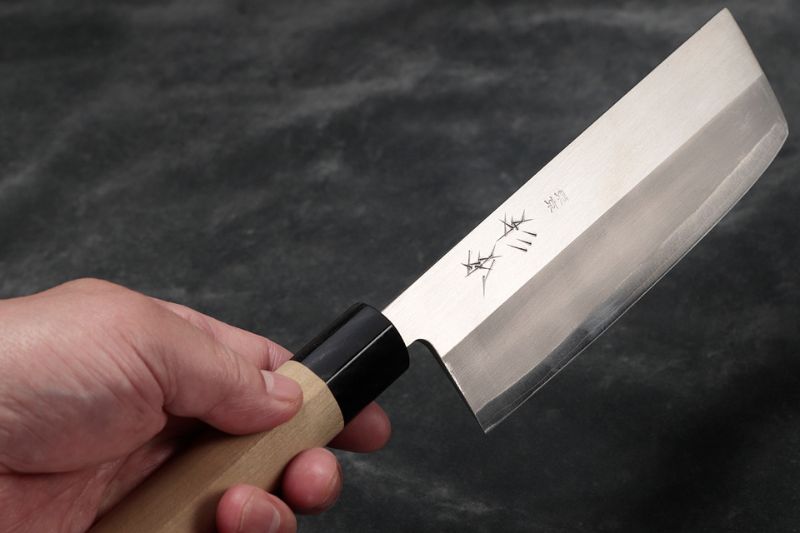 How to maintain a Nakiri knife?
How to maintain a Nakiri knife?
Proper care and maintenance of your Nakiri knife are essential to keep it sharp, rust-free, and in good condition.
- Hand washing
Always hand wash your Nakiri knife with warm water and mild dish soap. Avoid scouring pads or abrasive sponges, as they can damage the blade. - Dry immediately
After washing, dry your knife immediately with a soft cloth or towel. Please do not leave it to air dry, as this can cause rust to develop on the blade. - Sharpen regularly
Keep your Nakiri knife sharp by sharpening it regularly with a whetstone. This will ensure that it cuts efficiently and prevents damage to the blade. - Store your Nakiri knife properly in a knife block, sheath, or magnetic knife strip to protect the blade from damage and prevent accidental injury.
- Oil the blade
If you live in a humid environment or store your knife for long periods, applying a thin layer of mineral or camellia oil to the blade is recommended to prevent rust and oxidation.
By following these simple care tips, you can keep your Nakiri knife in good condition for a long time.
Whether buying a Nakiri knife is worth it depends on your needs and preferences. However, if you frequently prepare vegetables in your cooking and value precision and efficiency, then a Nakiri knife can be a worthwhile investment.

While Nakiri knives can be more expensive than other knives, their durability and versatility make them a worthwhile investment. Whether buying a Nakiri knife is worth it depends on your needs, preferences, and budget.
Get Free Bonus Books
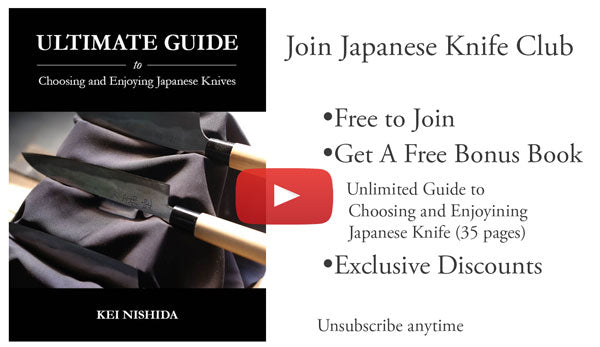
Sign up for free to the Japanese Knife Club to get advice and exclusive articles about how to choose Japanese Knives, and tips and tricks for using Japanese knives.
About the author
Kei Nishida
Author, CEO Dream of Japan
Certification: PMP, BS in Computer Science
Education: Western Washington University
Kei Nishida is a passionate advocate of Japanese craftsmanship, a writer, and the founder and CEO of Japanese Knife Co., Japanese Green Tea Co., and Japanese Coffee Co., all part of Dream of Japan.
His journey began with a mission to introduce the world to the exquisite flavors of Japanese green tea. Through Japanese Green Tea Co., he pioneered the import of premium tea grown in nutrient-rich sugarcane soil, earning multiple Global Tea Champion awards. He then expanded into the world of coffee, launching Japanese Coffee Co., the first company to bring Sumiyaki charcoal-roasted coffee to a global audience.
With a deep appreciation for Japanese artistry and tradition, Kei turned his attention to one of Japan’s most revered crafts: bladesmithing. Through Japanese Knife Co., he made handcrafted katana-style knives, created by a renowned katana maker, available outside Japan for the first time. These exceptional knives embody centuries of samurai sword-making expertise, blending tradition with modern functionality for chefs and collectors alike.
Kei’s journey continues as he uncovers and shares Japan’s hidden treasures—one sip, one blade, and one legacy at a time.

